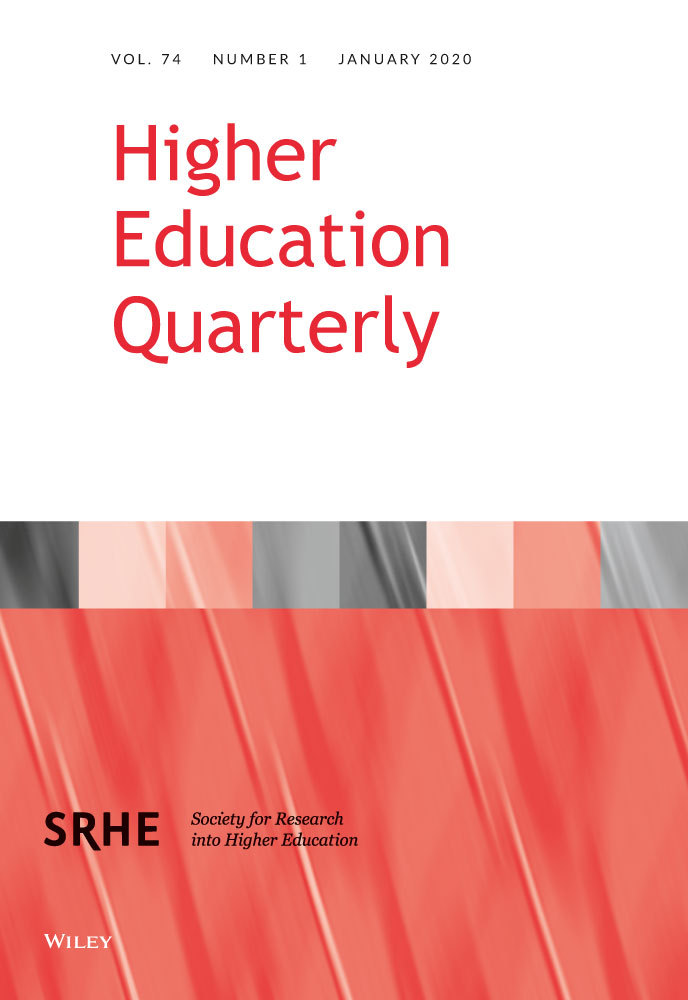An analysis of the trends of undergraduates' academic achievement based on their admissions type in Korea
Abstract
enThis study investigates the establishment and benefits of the comprehensive admissions type recently introduced into Korean universities. We analyse undergraduate students' academic achievement and career readiness across three different admissions types in a medium-sized university: rolling, comprehensive and regular. First, a series of mixed ANOVAs examined longitudinal changes for academic achievement and a set of ANOVAs found differences for academic achievement, within each semester. Specifically, students admitted via comprehensive admissions were found to have grade point averages (GPAs) similar to students admitted via regular admissions. Second, two-way MANOVA examined students' career readiness by admissions type and academic standing. Students admitted through comprehensive admissions were found to exhibit a higher level of career readiness across academic years. The implications for admissions types in Higher Education are discussed.
초록
ko본 연구는 한국 대학에 새롭게 도입된 학생부 종합전형의 성과를 검토해 보고자 하였다.이를 위해 한 중규모 대학의 세 가지 입학 유형인 학생부교과, 학생부종합, 정시 전형별로 입학한 학생들의 학업 성취도와 진로 준비도를 살펴보았다. 첫째, 학업성취도의 종단적 변화를 살펴본 결과, 각 학기별로 학업성취도의 차이를 확인하였다. 특히 학생부종합전형을 통해 입학한 학생들과 정시전형을 통해 입학한 학생들의 성취도에 차이가 없는 것으로 나타났다. 둘째, 입학전형의 유형과 학업 성취도에 따라 학생들의 진로 준비 상태를 조사한 결과, 학생부 종합전형을 통해 입학한 학생들은 재학기간 내 타 전형으로 입학한 학생들에 비해 더 높은 수준의 진로 준비 상태를 보였다. 연구결과를 바탕으로 한국 대학의 입학 유형에 대한 시사점을 제시하였다.




